The ocean steam navigation company ADRIA was the Hungarian example for the seacabilities of the empire of Austro-Hungary. The company showed more than the average image of Hungary than czárdás, puszta romantic, gypsy (now political correct: Romani and Sinti) violinists and other k.u.k. romanticisms. The employees serving proud ADRIA had been all from Hungary (Magyarország [ˈmɒɟɒrorsaːɡ] (listen)).
by Earl of Cruise
by Earl of Cruise
FERENCZ JÓZSEF KIRÁLY - © Dr. Tamás Balogh
ADRIA MAGYAR KIRÁLY TENGERHAJÓZÁSI RÉSZVÉNYTÁRSÁG (KÖNIGLICHE
UNGARISCHE SEESCHIFFAHRTS A.G. ADRIA / ADRIA
ROYAL HUNGARIAN SEA NAVIGATION Co. Inc. ADRIA)
Logo of ADRIA - Source: Wikipedia
Besides AUSTRO-AMERICANA and ÖSTERREICHISCHER LLOYD / LLOYD AUSTRIACO the empire of Austria-Hungary had a third major shipping company - ADRIA, MAGYAR TENGERHAJÓZÁI RÉSZVÉNYTÁRSÁSÁG (ROYAL HUNGARIAN SEA NAVIGATION Co. Inc. ADRIA), the Hungarian line out of Fiume/Rijeka.
ADRIA became the most important Hungarian shipping company after
establishing in 1882 with a basic capital of 2.5 million Guldern as ADRIA MAGYAR TENGERHAJÓZÁI RÉSZVÉNYTÁRSÁSÁG (HUNGARIAN MARITIME SHIPPING Inc. ADRIA) and worked with up to 35 ships until 1936. Their motto was: Hazának
Használj (Be useful to your country / Sei deinem Land nützlich).
The ADRIA PALACE in Fiume (1897) - Source: Wikipedia
The starting point of the founding of the company was the activity of the ADRIA
STEAMSHIP COMPANY founded by Gottfried Schenker in 1879. In 1880, an agreement between the ADRIA STEAMSHIP COMPANY and the
Kingdom of Hungary, which became interested to operate its own maritime trade, after the
Austro Hungarian compensation, as independently as possible from Austria in 1867, was agreed that ADRIA
had to make 170 trips annually to Great Britain. This involved an annual
subsidy of 150,000 FLORIN (FORINT).
The final step for the move was the growing state subsidy for LLOYD AUSTRIACO in the beginning of 1880. Therefore Hungary left the company and
responsibilities for and concentrated on its Hungarian naval interests.
Nevertheless, the company had to file for bankruptcy in 1882 and was
dissolved.
For continuing the Hungarian maritime trade, ADRIA was now established as a
stock company with a capital of 2.5 million GULDEN, which initially had its
seat exclusively in Budapest, later also in Fiume (Rijeka). On January 15,
1882, the first ship of the newly founded company, SZAPÁRY, which had already
set sail on the Irish coast on the Irish coast on December 27th, with Fiume
flour for Dublin and Glasgow, ran aground and was wrecked.
ÁRPÁD sternview (postcard from 1905, Sujet: A. Kircher), the vessel was named after Árpád
(Hungarian pronunciation: [ˈaːrpaːd];
c. 845 – c. 907), founder of Hungary - Source: Wikipedia
1885 the company service could be expanded to Malta, Tunis and Algeria -
the company also showed profits for the first time: 80,000 GULDEN. In 1886 the
fleet reached an extent of 10 steam ships.
After the Austria Hungary compensation, LLOYD Austriaco in 1867 was renamed
to ÖSTERREICHISCH-UNGARISCHER LLOYD / AUSTRO-HUNGARIAN LLOYD (LLOYD
AUSTRO-UNGARICO) in 1872, the LLOYD and its direct competitor, the ADRIA,
because of different sets of interests, differences between the governments in
Vienna and Budapest started growing. Finally, the Hungarian state gave up its
participation in the LLOYD, because of rising subsudies, and stopped its
co-subsidization, LLOYD took again its old name from 1891 onwards, and the
government of Hungary concentrated its support measures on ADRIA AG, but at the
same time also influenced the founding of UNGARO-COATO, which is also based in
Fiume. UNGARO-CROATO was a merger of smaller shipping companies, and mainly engaged in the coastal trade and passenger shipping. In the same
year, a new contract with a duration of 10 years was concluded between the
Hungarian State and ADRIA. The ADRIA undertook to extend its fleet to 25 ships
and the liner service as follows:
·
|
24
sailings anually to Liverpool
|
·
|
18
sailings anually to Glasgow
|
·
|
|
·
|
12
sailings anually to Leith
|
·
|
|
·
|
12
sailings anually to Rouen
|
·
|
12
sailings anually to Bordeaux
|
·
|
6
sailings anually to Hamburg
|
·
|
6 sailings
anually to Brazil - alternating with ÖSTERREICHISCHER LLOYD (since 1907 AUSTRO-AMERICANA took over the Brazil
sailings
|
In return, the Hungarian government's annual subsidies rose to 570,000 Gulden
and allowed the company to be called "MAGYAR KIRÁLYI". On the basis
of the contractually gauranteed subsidies, ADRIA raised further funds and increase
its capital to 1,250,000 Gulden to procure the ships, and in 1892 issued a
priority loan (bond)
of 3,000,000 Gulden through a bank consortium.
BÁRÓ FEJÉRVÁRY, renamed ARIOSTO after 1919 at the Quarnero Shipyard in the 1920s - Source: HAJOREGISZTER
The new treaty gave the Hungarian government a significant influence in ADRIA.
At the same time, as in the past, only ÖSTERREICHISCHER LLOYD, ADRIA was
obliged to carry out military journeys in military warfare - transports of
troops, food and war materials.
In 1901, the treaty was extended until 31 December 1921, with essentially
unchanged core conditions, the contract but now listing 23 destinations to be
served. The re-newed contract caused an increase in ship numbers to 35 by the
end of 1902 and a further 5 units added after 1911.
The steamers to be procured had to develop a driving speed of at least 10 kts/nm
during a test ride. Furthermore, the Hungarian Transport Minister approved the
passenger transport charges and the freight rates were regulated in detail. It
was also necessary to coordinate the ticket issue and the transit of baggage
for passengers of ADRIA, which also used the Hungarian national railways. After
all, the company was committed to paternal interests in its entire business
policy, which included the preference for Hungarian products and services. The
value of unchanged subsidies should now be paid in the amount of CZK 1,140,000
(forint) in extra-monthly arreas rates of CZK 95,000. As a result, the services
provided by the Treaty on the part of the ADRIA were criticized by the
opposition in the Hungarian parliament as the new ships were not realized and
the planned routes were only partly served.
In 1898, the agreement between the Austrian and Hungarian Governments
resulted in the conclusion of a convention on the distribution of traffic zones
between the LLOYD and the ADRIA. After that, the West was reserved for the ADRIA,
notably Italy, Malta, Spain, France, Great Britain, North and West Africa
(except Egypt) and North America, ÖSTERREICHISCHER LLOYD the Orient, East
Africa, India, China and Japan. The Black Sea region is "neutral".
Like ÖSTERREICHISCHER LLOYD, ADRIA offered pleasure touring, but on a much
smaller scale. For the 1907 season, e.g. Weekly trips on the Mediterranean
routes Fiume-Bari-Naples-Genoa-Marseille-Barcelona-Valencia-Trieste-Fiume and
Fiume-Trieste-Bari-Naples-Genoa-Marseille-Nice-Genoa-Fiume.
FERENCZ FERDINÁND, later ADRIAof LLOYD TRIESTINO - drawing courtsey by Ernesto Gellner
FERENCZ FERDINÁND 01 as Adria of Lloyd Triestino - Source: HAJOREGISZTER
These pleasure tourings had been done by usable combi steamers of the
fleet. But at Clyde
SB. & Eng. Co. Ltd., Port Glasgow, ADRIA ordered three 3,500 GT passenger
liners, which became intenational competitive, even if small in comparison to
other liners. These liners had been the first ships with which ADRIA intended
to serve the passenger trade with bigger ships and then state of the art
accomodation.
FERENCZ JÓZSEF KIRÁLY, after 1919 CARNARO of LLOYD TRIESTINO - Source: HAJOREGISZTER
The ships had been FERENCZ FERDINÁND, FERENCZ JÓZSEF KIRÁLY and KÁROLY FERENCZ JÓZSEF, which had been sized on the slip and was finished as the submarine depot vessel TITANIA. As submarine depot she served at various staions with the ROYAL NAVY, as she was also in service during WWII.
Main Salon of FERENCZ JÓZSEF KIRÁLY - pictures courtsey from the 23.04.1914 issue of the Shipbuilding and Shipping Record magazin
First Class Cabin of FERENCZ JÓZSEF KIRÁLY - pictures courtsey from the 23.04.1914 issue of the Shipbuilding and Shipping Record magazin
First Class Suite of FERENCZ JÓZSEF KIRÁLY - pictures courtsey from the 23.04.1914 issue of the Shipbuilding and Shipping Record magazin
Built
|
1914, SCOTTS SB. & ENG. Co. Ltd., Glasgow, Clyde, United Kingdom
|
Length
overall:
|
102,17 m
|
Extrem
breadth:
|
14,14 m
|
Depth:
|
7,62 m
|
Draft:
|
6,76 m
|
DWT:
|
3150
|
GRT:
|
3542
|
Main
engine type:
|
|
Output
of main engine:
|
3500 LE
|
Stillwater
speed:
|
13,5 knot
|
FERENCZ FERDINÁND and FERENCZ JÓZSEF KIRÁLY were operated primarily as enigrant ships, with state of art First Class accomodations, besides the CUNARD steamers out of Fiume. Same was intende for KÁROLY FERENCZ JÓZSEF, which was sized on the slip in 1914 and finished as Royal Navy submarine support vessel TITANIA. As such she served even in WWII.
KÁROLY FERENCZ JÓZSEF completed as TITANIA submarine depot vessel of ROYAL NAVY - Source: HAJOREGISZTER
At the outbreak of WWI in 1914, the fleet of the ADRIA comprised 33
steamboats. Compared to ÖSTERREICHISCHER LLOYD, which was not only numerical,
but also much smaller in terms of its tonnage. While the 65 ships of the LLOYD
tonnage ranged from 2,000 or 3,000 GRT up to 8,500 GRT, the ships of ADRIA
ranged from 1,500 to 3,000 GRT. The largest ship, the ARAD, exhibited 3,927
GRT.
With the end of the war only 25 ships returned, which first had to travel
under an interlaced flag. The company was taken over by a financially strong
group, among them Alberto and Oscar members of the Cosulich family, and renamed
SOCIETÀ ANONIMA de NAVIGANZIONE MARITTIMA ADRIA. The main ports were Venice and
Voloska until 1924, then again Fiume. In 1936 the company was stopped for
financial reasons. Fleet and personnel were taken over by the Neapolitan
shipping company TIRRENIA di NAVIGAZIONE.
When visiting KOTOR in Montenegro, make a visit at the Travel Agency Adria Line, now a museum - own picture
hamarosan találkozunk - auf bald - see you again - à bientôt


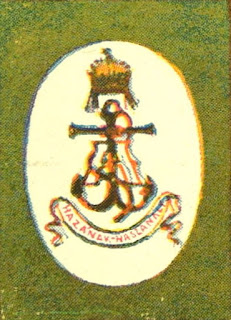

![ÁRPÁD sternview (postcard from 1905, Sujet: A. Kircher), the vessel was named after Árpád (Hungarian pronunciation: [ˈaːrpaːd]; c. 845 – c. 907), founder of Hungary - Source: Wikipedia Adria](https://blogger.googleusercontent.com/img/b/R29vZ2xl/AVvXsEik1uZTVEnbuspsl5_siHJTGLGfmepqD4i3HAqvsMZMN9BzADWjBuvJm1OYTpJbZr-sKbtH5NyPJyqrxTo6DVmwIN1RIcozrJvkpMryyts_JhLPqid_3i6mnB9LgtK9X_BlcwfMg_lOu4U/s640/Adria_Rt._SS_%25C3%2581rp%25C3%25A1d.jpg)
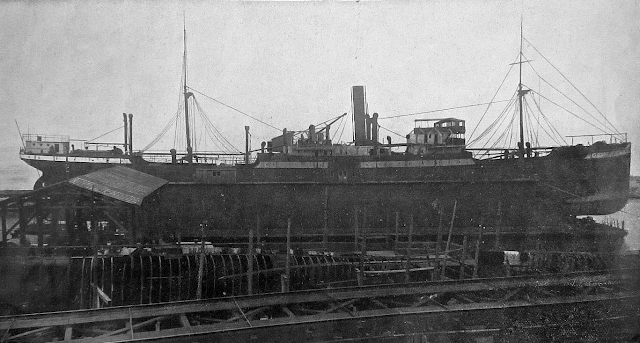


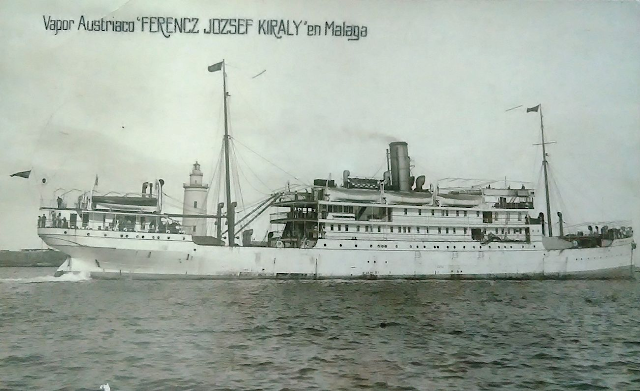
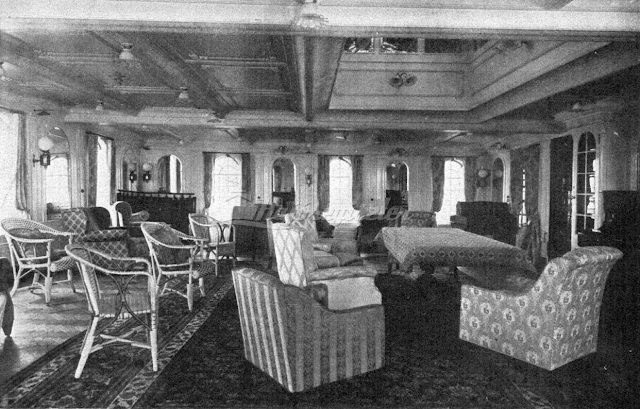
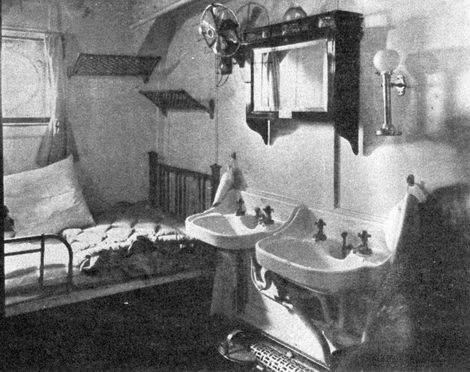


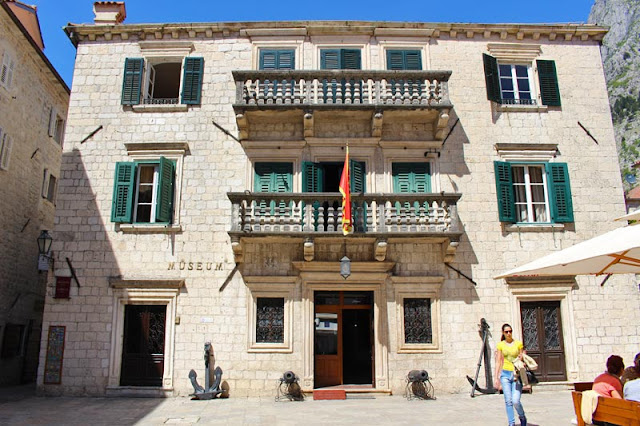
Comments
Post a Comment